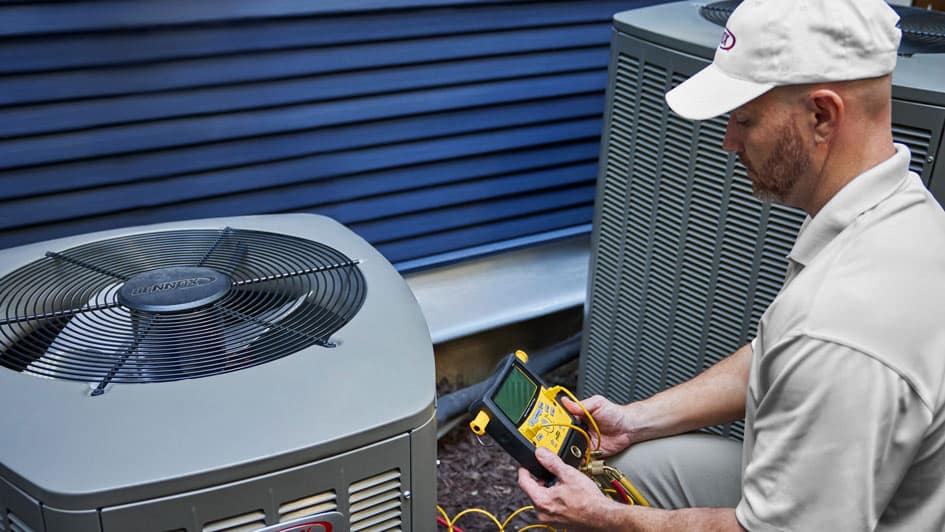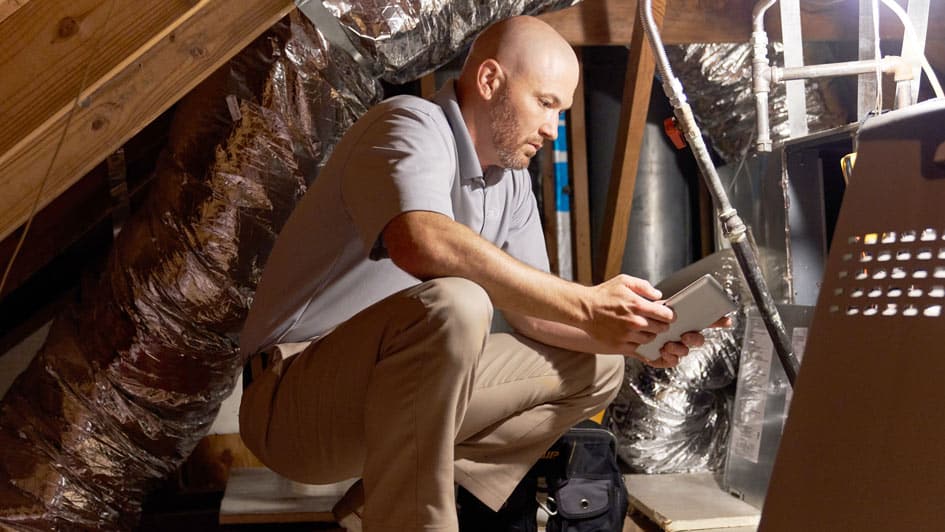
Our Pros Answer Your Questions About Carbon Monoxide
Furnaces ignite fuel like oil and natural gas to generate heat for your home. As a side effect of this process, carbon monoxide is produced. Carbon monoxide is a potentially hazardous gas that can cause all sorts of health and breathing issues. Thankfully, furnaces are built with flue pipes that vent carbon monoxide safely away from your home. But if a furnace breaks down or the flue pipes are cracked, CO might leak into your home.
While quality furnace repair in Abilene can take care of carbon monoxide leaks, it’s also crucial to be familiar with the warning signs of CO in your house. You should also install carbon monoxide detectors in bedrooms, kitchens and hallways close by these rooms. We’ll share more facts about carbon monoxide so you can take steps to keep you and your family safe.
What Is Carbon Monoxide?
Carbon monoxide is a gas consisting of one carbon molecule and one oxygen molecule. When a flammable fuel like wood, coal or natural gas combusts, carbon monoxide is created. It normally disperses over time as CO gas weighs less than air. But when your home or furnace doesn’t have adequate ventilation, carbon monoxide will sometimes reach higher concentrations. As a matter of fact, one of the reasons it’s viewed as a hazardous gas is because it has no color, odor or taste. Levels may increase without anybody noticing. This is the reason why it’s essential to install a carbon monoxide detector in your home. A carbon monoxide detector is perfect for identifying evidence of CO and notifying you via the alarm system.
What Creates Carbon Monoxide in a House?
Carbon monoxide is produced when any type of fuel is burned. This means natural gas, propane, oil, wood and coal. Natural gas is particularly common because of its availability and inexpensive price, making it a regular source of household CO emissions. Apart from your furnace, lots of your home’s other appliances that require these fuels can emit carbon monoxide, including:
- Water heaters
- Stoves
- Ovens
- Fireplaces
- Wood stoves
- Hot tubs
- and more
Like we mentioned above, the carbon monoxide the furnace creates is normally vented safely outside of your home through the flue pipe. In fact, the majority of homes won’t need to worry about carbon monoxide accumulation since they offer adequate ventilation. It’s only when CO gas is confined in your home that it passes concentrations high enough to cause poisoning.
What Does Carbon Monoxide Do to the Body?
After carbon monoxide gas is in your lungs, it can attach to the hemoglobin in your blood cells. This prevents oxygen from binding to the blood cells, interrupting your body’s ability to transport oxygen in the bloodstream. So even if there’s plenty of oxygen in a room, your body wouldn’t be able to utilize it. Lack of oxygen affects every part of the body. If you’re in contact with dangerous amounts of CO over a long period of time, you can experience a number of symptoms:
- Headache
- Dizziness
- Nausea
- Vomiting
- Fatigue
- Shortness of breath
At even higher levels, the symptoms of carbon monoxide poisoning are even more serious. In high enough concentrations, it’s capable of becoming fatal. Symptoms can include chest pain, confusion, agitation, seizures and unconsciousness.
These symptoms (namely the less serious symptoms) are often mistaken for the flu because they’re so generalized. But if you have multiple family members suffering from symptoms concurrently, it could be a sign that there’s carbon monoxide in your home. If you suspect you have CO poisoning, leave the house straight away and call 911. Medical providers can make sure your symptoms are treated. Then, get in touch with a certified technician to inspect your furnace and HVAC ventilation system. They can find where the gas is escaping.
How to Get Rid of Carbon Monoxide
When a technician has found carbon monoxide in your house, they’ll pinpoint the source and seal the leak. It might be any of your fuel-burning appliances, so it can take a bit of time to find the correct spot. Your technician will be looking for soot or smoke stains and other evidence of carbon monoxide. In the meantime, here’s what you can manage to minimize CO levels in your home:
- Make sure your furnace is properly vented and that there aren’t any obstructions in the flue pipe or somewhere else that would trap carbon monoxide gas in your home.
- Keep doors open between rooms whenever you use appliances that produce carbon monoxide, like fireplaces, stoves or ovens, to increase ventilation.
- Avoid using a gas stove or oven to heat your home. These appliances would need to run constantly, squandering energy and putting heavy strain on them.
- Do not burn charcoal inside your home. Not only does it create a mess, but it can produce more carbon monoxide.
- Try not to use fuel-powered generators, pressure washers or other gas-powered tools in compact spaces.
- If you use a wood-burning fireplace, ensure the flue is open when in use to enable carbon monoxide to exit the house.
- Stay on top of routine furnace maintenance in Abilene. A broken down or faulty furnace is a frequent source of carbon monoxide emissions.
- Most importantly, put in carbon monoxide detectors. These helpful alarms recognize CO gas much sooner than humans will.
How Many Carbon Monoxide Detectors Do I Need?
It’s important to set up at least one carbon monoxide detector on each floor of your home, as well as the basement. Concentrate on bedrooms and other spaces further from the exits. This provides people who were sleeping enough time to exit the home. It’s also a great idea to put in carbon monoxide alarms close to sources of CO gas, such as your kitchen stove or a water heater. And finally, very large homes should consider additional CO detectors for equal protection for the entire house.
Let’s say a home has three floors, including the basement. With the aforementioned suggestions, you’d want to install three to four carbon monoxide detectors.
- One alarm could be placed close to the furnace and/or water heater.
- The second alarm can be set up around the kitchen.
- And the third and fourth alarms could be installed near or within bedrooms.
Professional Installation Reduces the Risk of Carbon Monoxide
Protecting against a carbon monoxide leak is always more effective than repairing the leak after it’s been found. An easy way to avoid a CO gas leak in your furnace is by leaving furnace installation in Abilene to certified experts like Abilene Air-Tech Inc. They know how to install your ideal make and model to ensure optimal efficiency and minimal risk.
Don't wait until your AC breaks down - get a professional maintenance check now.
Contact



